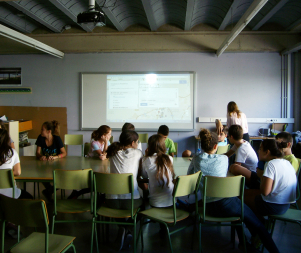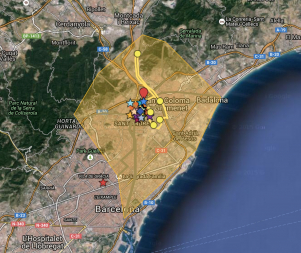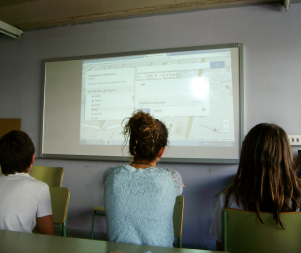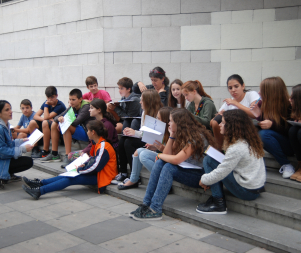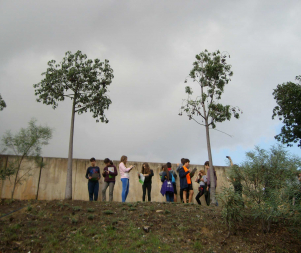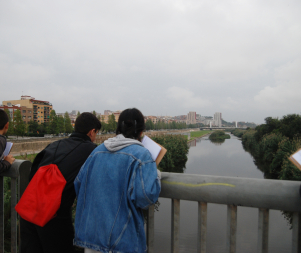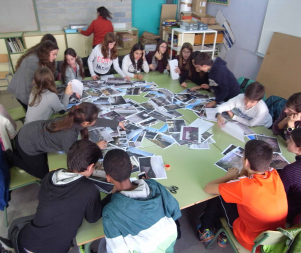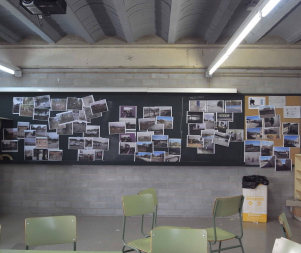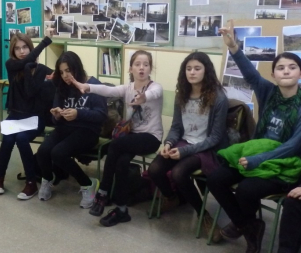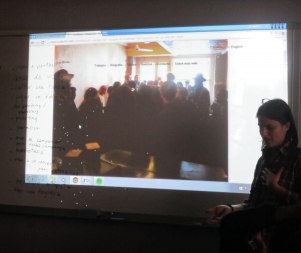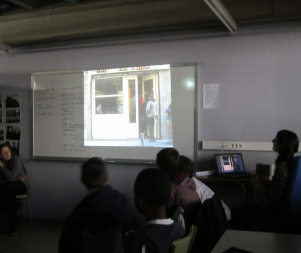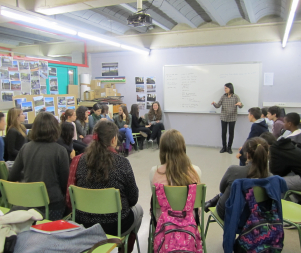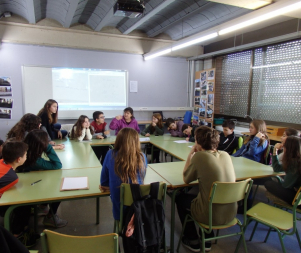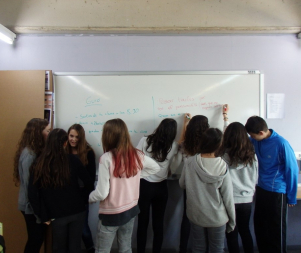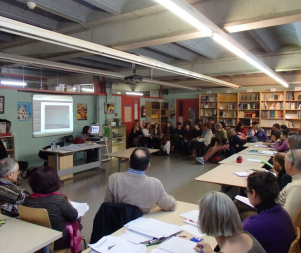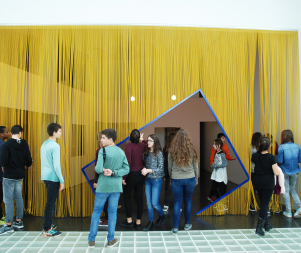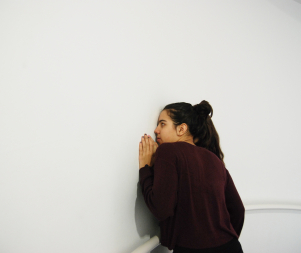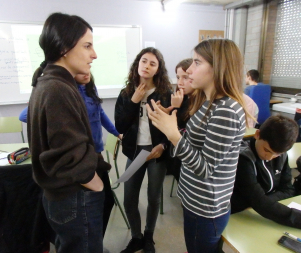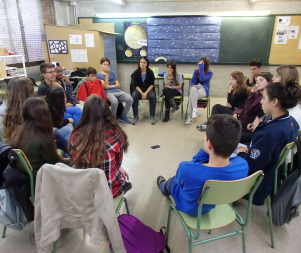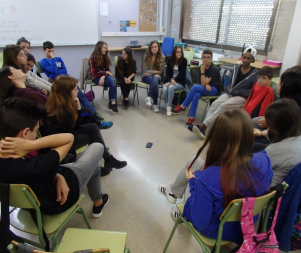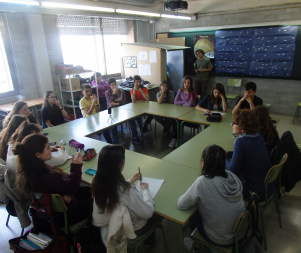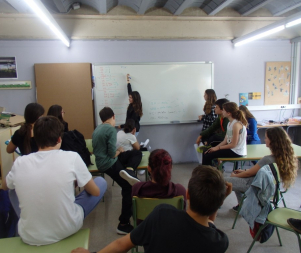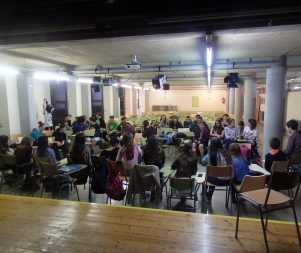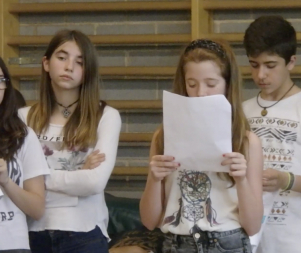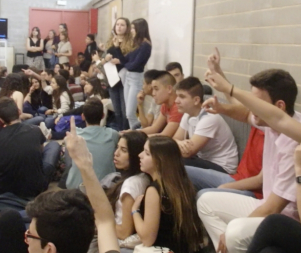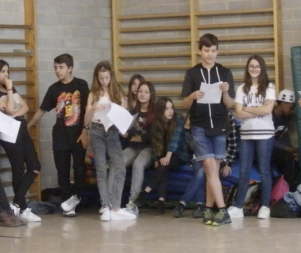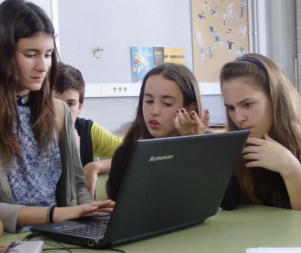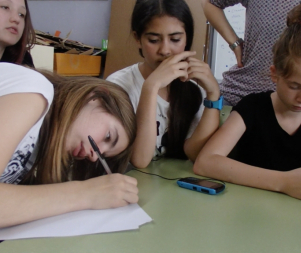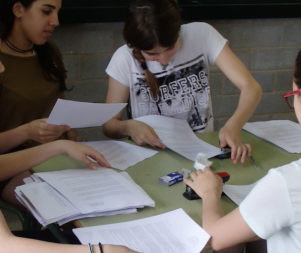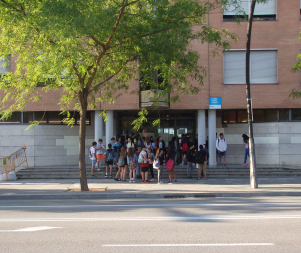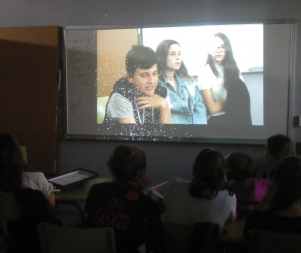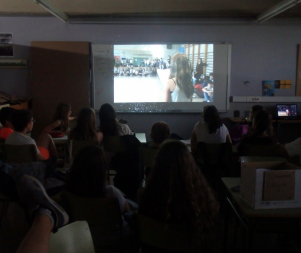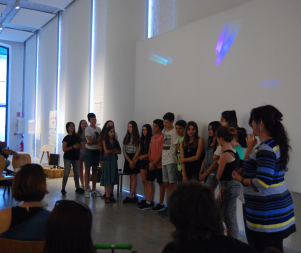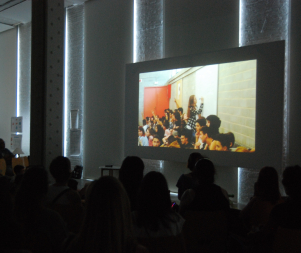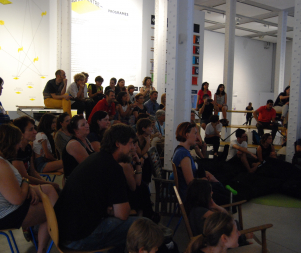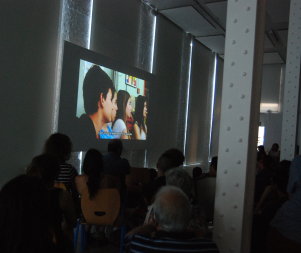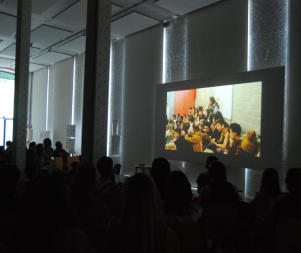- 14th EDITION 2022 / 2023
- 13th EDITION 2021 / 2022
- 12th EDITION 2020 / 2021
- 11th EDITION 2019 / 2020
- 10th EDITION 2018 / 2019
- 9th EDITION 2017 / 2018
- 8th EDITION 2016 / 2017
- 7th EDITION 2015 / 2016
- 6th EDITION 2014 / 2015
- 5th EDITION 2013 / 2014
- 4th EDITION 2012 / 2013
- 3rd EDITION 2011 / 2012
- 2nd EDITION 2010 / 2011
- 1st EDITION 2009 / 2010
Luz Broto IN RESiDENCE at the School Doctor Puigvert
Where we live, how we travel
At first, the residency focuses on work concerning the pupils' immediate surroundings. Different places are marked on a map: the school, the place where the pupils live and the most distant places they have reached on foot or by bicycle. This serves to create a radius of action within which the group can begin their explorations.
Six outings around the school
Sessions are devoted to exploring the area around the school, taking a different direction every day. The first outing takes the group to Baró de Viver; the second, to the railway station behind the school; the third to the ring road and the Trinitat Park; the fourth, to cross Avinguda Meridiana to reach the Prosperitat neighbourhood; the fifth, to the industrial estates around La Maquinista shopping centre; and the sixth and last, to the environs of the River Besòs in the direction of Montcada i Reixac. The pupils take notes on all these walks, and make photo records of the places and boundaries that they discover, as well as noting all the feelings and thoughts that each new place inspires in them.
WALKS
http://blocsenresidencia.bcn.cat/doctorpuigvert1516/?p=86
http://blocsenresidencia.bcn.cat/doctorpuigvert1516/?p=98
http://blocsenresidencia.bcn.cat/doctorpuigvert1516/?p=117
http://blocsenresidencia.bcn.cat/doctorpuigvert1516/?p=129
http://blocsenresidencia.bcn.cat/doctorpuigvert1516/?p=145
http://blocsenresidencia.bcn.cat/doctorpuigvert1516/?p=147
Summing up: we review the notes and photographs
When the outings end, it is decided to print a selection of around two hundred photographs taken by the pupils. The notes that each has compiled are also studied. The goal is to define the framework for the project, to jointly choose one or several places or spaces to work on.
Discovering the work of Luz Broto: performances
Before the group decides which places to work on, Luz Broto shows them some of her creations. All are performances, recorded on film, whether the process or the action itself. After each showing, the group discusses what they have seen, seeking to understand how the artist works, her interests and her creative process.
A performance at school: leaving the classroom?
Watching the films of the artist's works leads the group to take a number of decisions. Their project will be a performance. However, before deciding what type of performance they are going to create and in which of the places they have worked on they will stage the piece, they decide to present a short performance at the school: Leaving the Classroom. The pupils devote several sessions to organising this short intervention, deciding who will take part in hit and how to analyse the motivations behind it and the consequences that it may have. A session is organised at a meeting of the whole teaching staff, which is attended by some of the pupils in order to explain their proposal.
MACBA: a hole in the wall
In view of the fact that Luz Broto has a piece in the exhibition Espècies d'espais [Species of Spaces], a guided tour is organised with the show's curator, Frederic Montornès. Montornès and Luz Broto tell the group about some of the key ideas behind the exhibition and link them to the work carried out as part of the creative process for the residency: a meditation on spaces. Finally, discussion centres on the hole in the wall that Luz Broto has made as her contribution to the show.
http://blocsenresidencia.bcn.cat/doctorpuigvert1516/?p=286
Creating a performance for spaces in the neighbourhood
In order to define the performance or performances that will take place in the neighbourhood, working parties are set up to think about what interventions would make sense in the various spaces explored. The group also thinks about the intention, what each of the performances might generate, not just in the group, but also in other people. After several sessions, the group decides that the space for the performance does not need to be outside their place of study, and that it will take place, precisely, at the school itself.
Rethinking the process: a second intervention at the school
Several sessions are devoted to designing the performance and the entire process. The question raised is “Are we capable of being at school for a whole day without teachers?”. The group decides to put this question to the entire education community at the school with a view to carrying out precisely that action: a day without teachers. This change in the process leads to a series of meetings and sessions, generating documents, thought and internal discussion, organised in such a way that the intervention can take place before the end of the academic year. The group decides that the pupils themselves will record the entire process so as to make a film.
Start of a process
The process begins with an initial meeting in the classroom with the school head to consider the proposal together. The head encourages the group to go through the whole process in order to decide whether it is possible to stage the intervention, and conversations begin with the other pupils at the school, firstly with a representative from the Council of Pupils, after which the proposal is presented to pupils who took part in previous editions of IN RESIDENCE. Finally, the group presents the idea to the whole Council of Pupils. The process intensifies when the pupils participating in the residency begin to go around all the classes at the school and also begin to talk to the teachers.
The school management team's proposal
At the end of this process, the school management team considers the proposal and the feasibility of putting it into practice. The team establishes a series of conditions: the intervention should last just two hours, and activities must be organised during this period of time. At this point, the pupils decide to consult the entire pupil body to see whether other students at the school are interested in taking part. An assembly takes place to this end, after which the process is interrupted for a time.
The school management's proposal and the letter
The difficulty of contacting all the other pupils at the school, the management team's proposal and lack of time persuades the group to address a final letter to the management team to set out their proposal as clearly as possible. This final process of negotiations leads to the decision that the action will take place over two hours and that no activities will be organised while it lasts. The protocol drawn up by the pupils to implement the action is activated. The other pupils, the teaching and non-teaching staff and families are informed about the proposal.
The action
The action A Day without Teachers takes place from 8 to 10 pm on Tuesday, June 7. One hundred and twenty-five pupils take part in the action by coming to school. The pupils decide that, though they have been filming the entire process, they will not film the action itself. For two hours, the pupils at the school organise themselves and manage time and use of spaces at the school for themselves. Over the following days, the film, which is now at the editing stage, is shown in order to share thoughts and take decisions.
The presentation at the Fabra i Coats Art Factory
Before the film is shown, some of the pupils explain the framework of the process that they have been working on. After the showing, members of the audience are invited to share their thoughts and opinions. Families, schoolmates, teachers and people linked to the world of culture take part in an intense, emotive debate.

